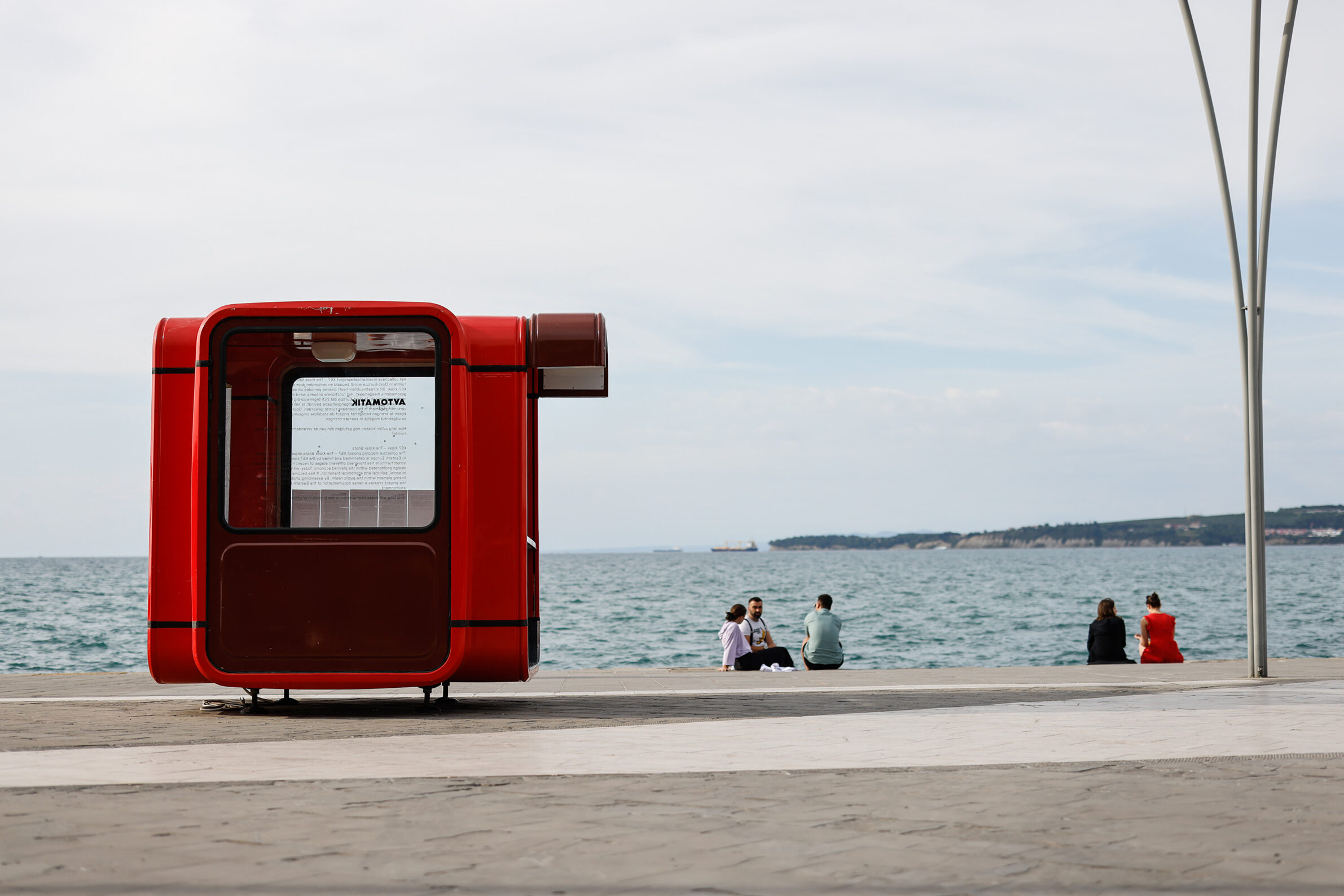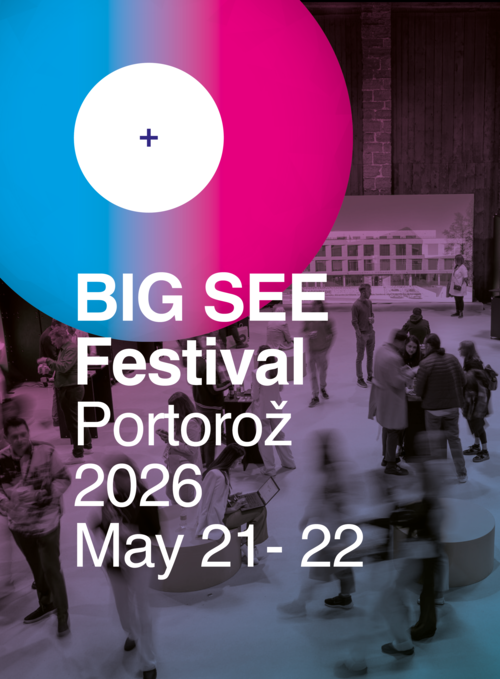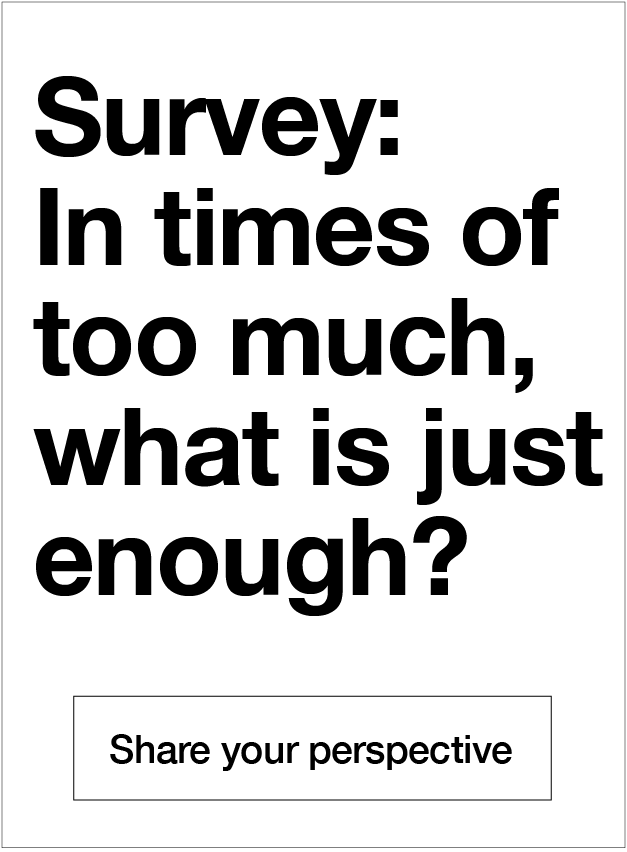Project that goes against the expected rules
In his novel Blindness, José Saramago narrates the story of a epidemic of blindness that affects an unnamed city so the encounters among inhabitants become increasingly frightening. The immense absurdity of the capital development of the contemporary city recalls Saramago’s apocalyptic vision of a city struck by what is referred to in the novel as “white blindness”.
How will we live together when all the public spaces have been sold? Saramago’s story is a parable of the fear of the unknown – is it war, isolation or just the fear of being too close to each other? The idea of utopia starts in projects that go beyond the expected rules. An idea that points out the neuralgic problems of a certain location and seeks an analysis of the current state of matter. One such utopia stands in the small Slovenian coastal town Koper, in a public square where a parking lot is situated on the most prominent position next to the sea.
This utopia, the K67 kiosk that was designed by Saša Mächtig in 1967, is now concluding its story with the absurdity of its use in a public square next to the sea that has been given over to parking. As the writer and journalist Martin Reichert, to whom we dedicated this project, would say, “it is a parking lot with the most beautiful view in the world”. The K67 is one of the best examples of design during the former Yugoslavia. In the context of the presentation of public spaces, and with the help of the owner of the Piran Coastal Galleries, this kiosk was placed on the square in Koper in December 2021, in order to become a new generator for its urban content.
From spring to late autumn 2023, a process of tactical and performative urbanism took place in and around the K67 in order to create an inclusive public space. The main concept, proposed and elaborated in cooperation with the municipality, was based on the idea of changing the current parking lot on the square into a green community space.
Tactical urbanism is the opposite of investment urbanism, which has a dispersed structure of activity in space and builds various, mainly residential buildings that sell well, but without a well-thought-out placement in the context of the city. The last plan for Koper was signed by the architect Edo Mihevc in the 1960s.
Today it looks like investor urbanism is a much faster process than town planning per se. And as a result, there is no more urban planning in Koper today. Here, as in other towns along the Adriatic coast, there is an obvious pressure from investor urbanism. Public spaces are mostly touristised, privatised and do not belong to the citizens anymore. Therefore is important to ensure that buildings are not built without public competitions. The K67 still stands in Koper as a reminder of a utopia that should make us all aware of the importance of the reuse and creation of community spaces.
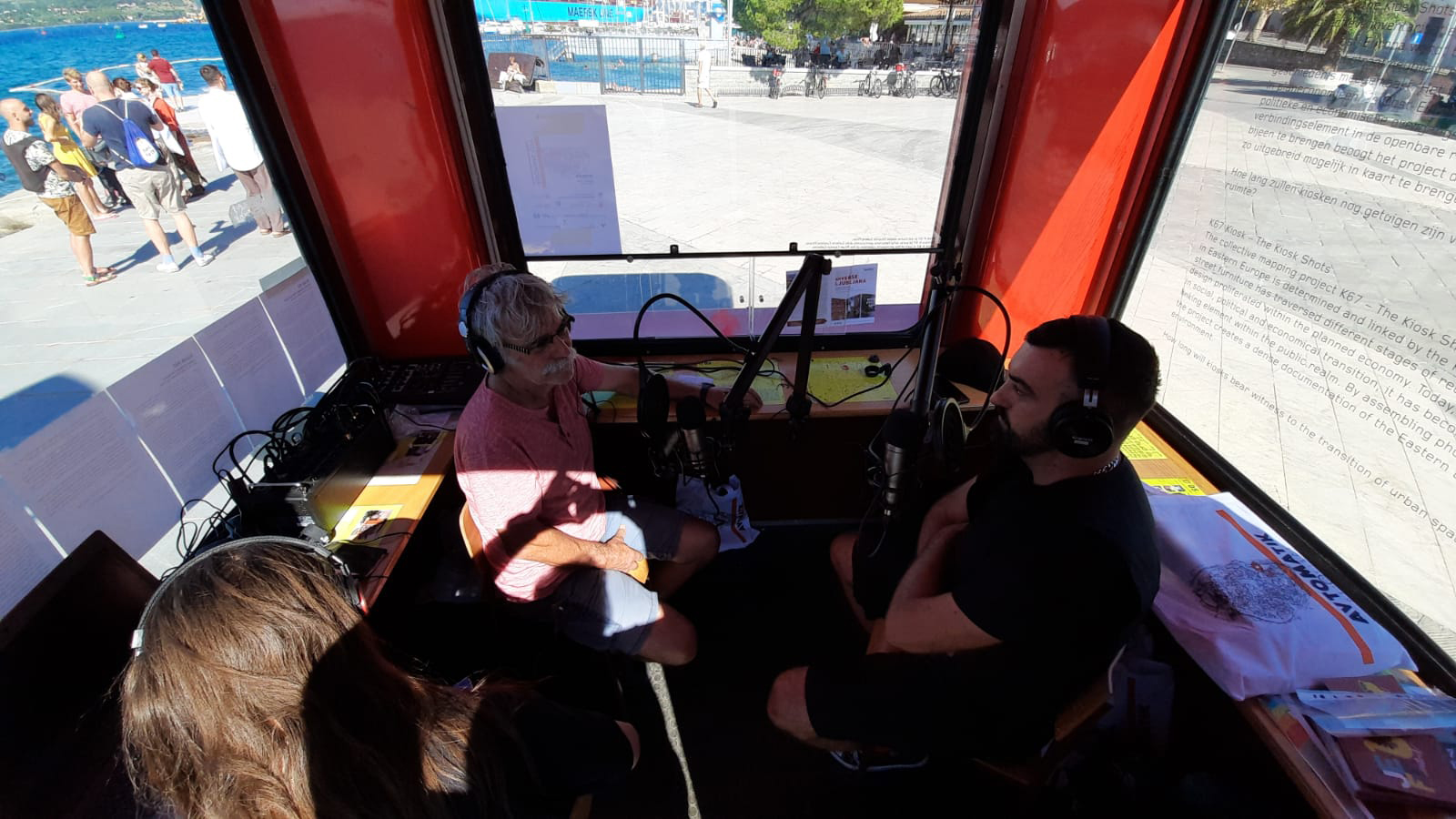
Public talks in the K67 with local cultural and political figures transmitted live on Independent Coastal Radio NOR.
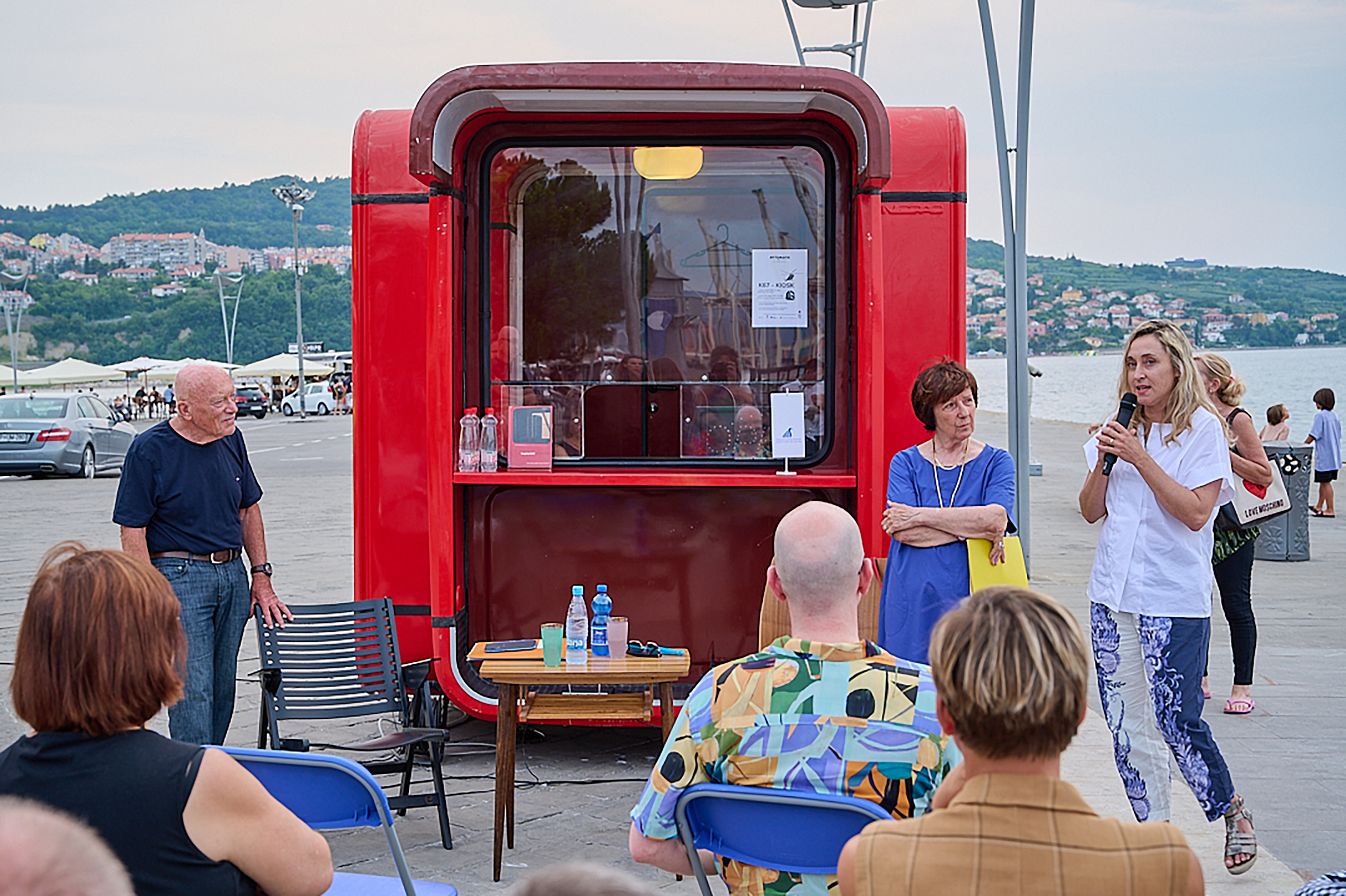
At the opening event on 22 July 2021 on Ukmarjev Square in Koper with Saša Mächtig, the designer of the K67, and Mara Ambrožič Verderber, the director of the Piran Coastal Galleries. Photo: © Črt Kozlovič
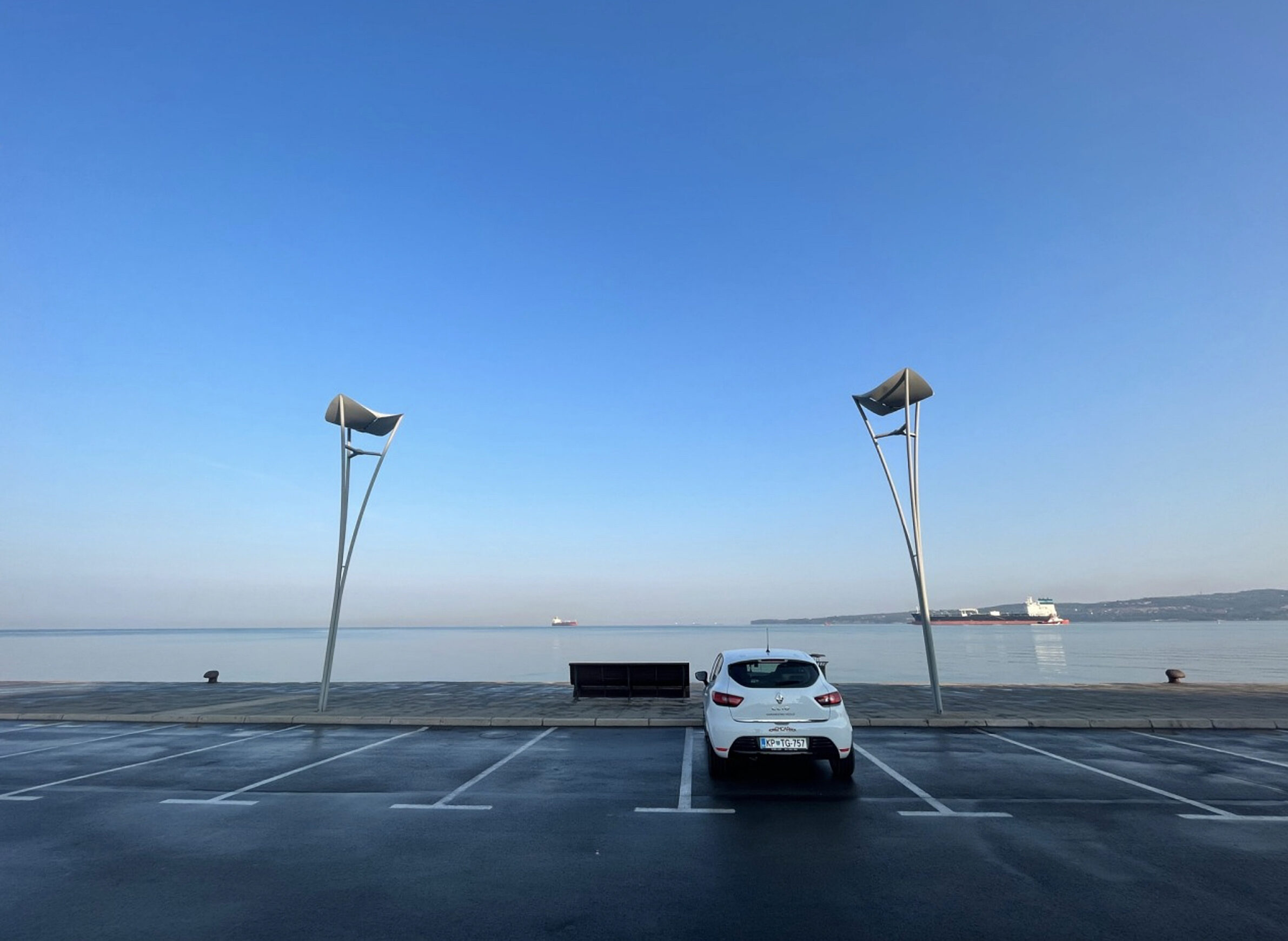
“A parking lot with the most beautiful view in the world”. Photo: © Boštjan Bugarič
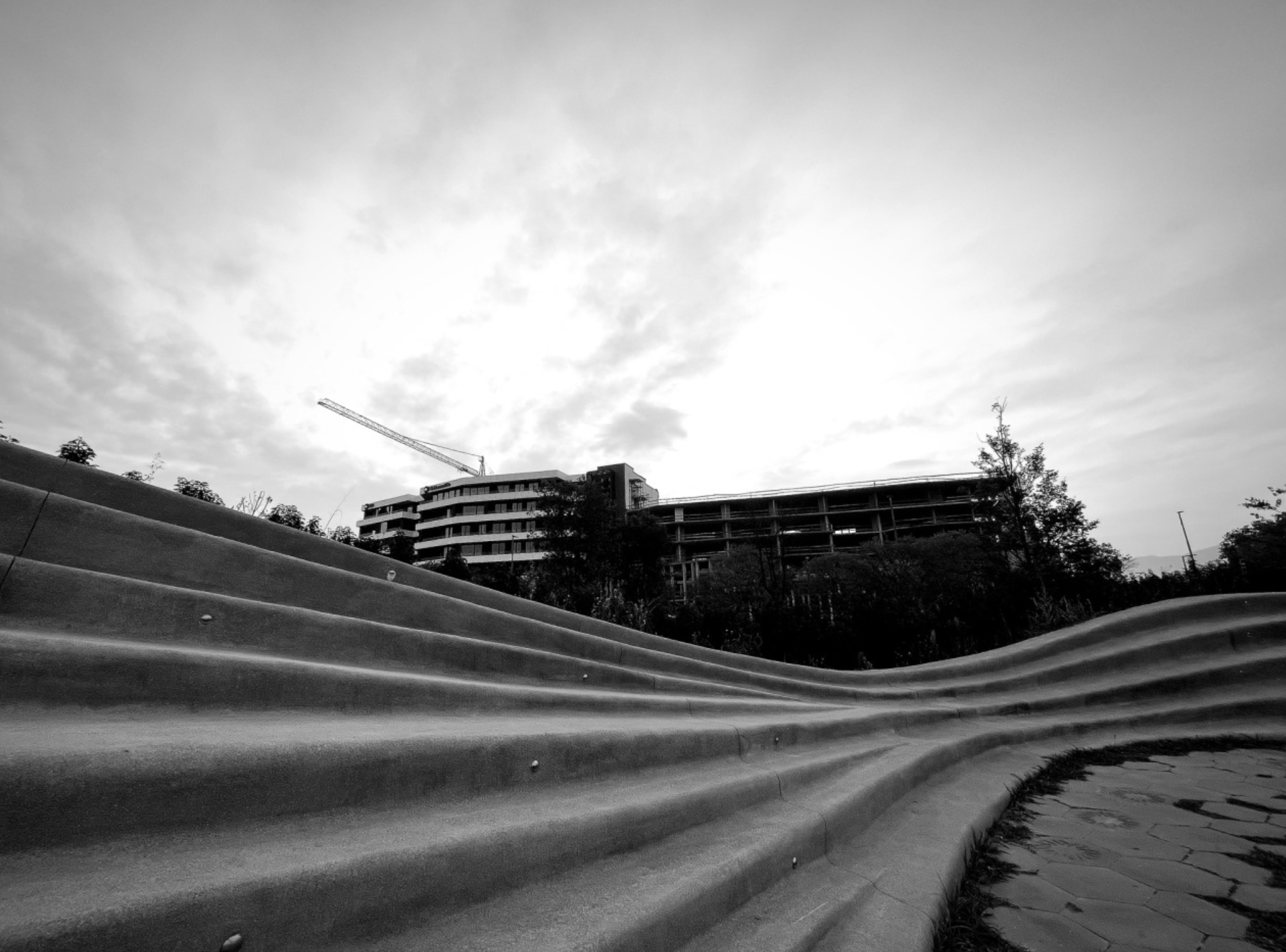
To date the still unfinished Solis development has dragged on for more than ten years and is example of a failed Public-Private Partnership project. After the COVID-19 epidemic the investor succeeded in adding two more floors of private apartments to the building. Photo: © Boštjan Bugarič
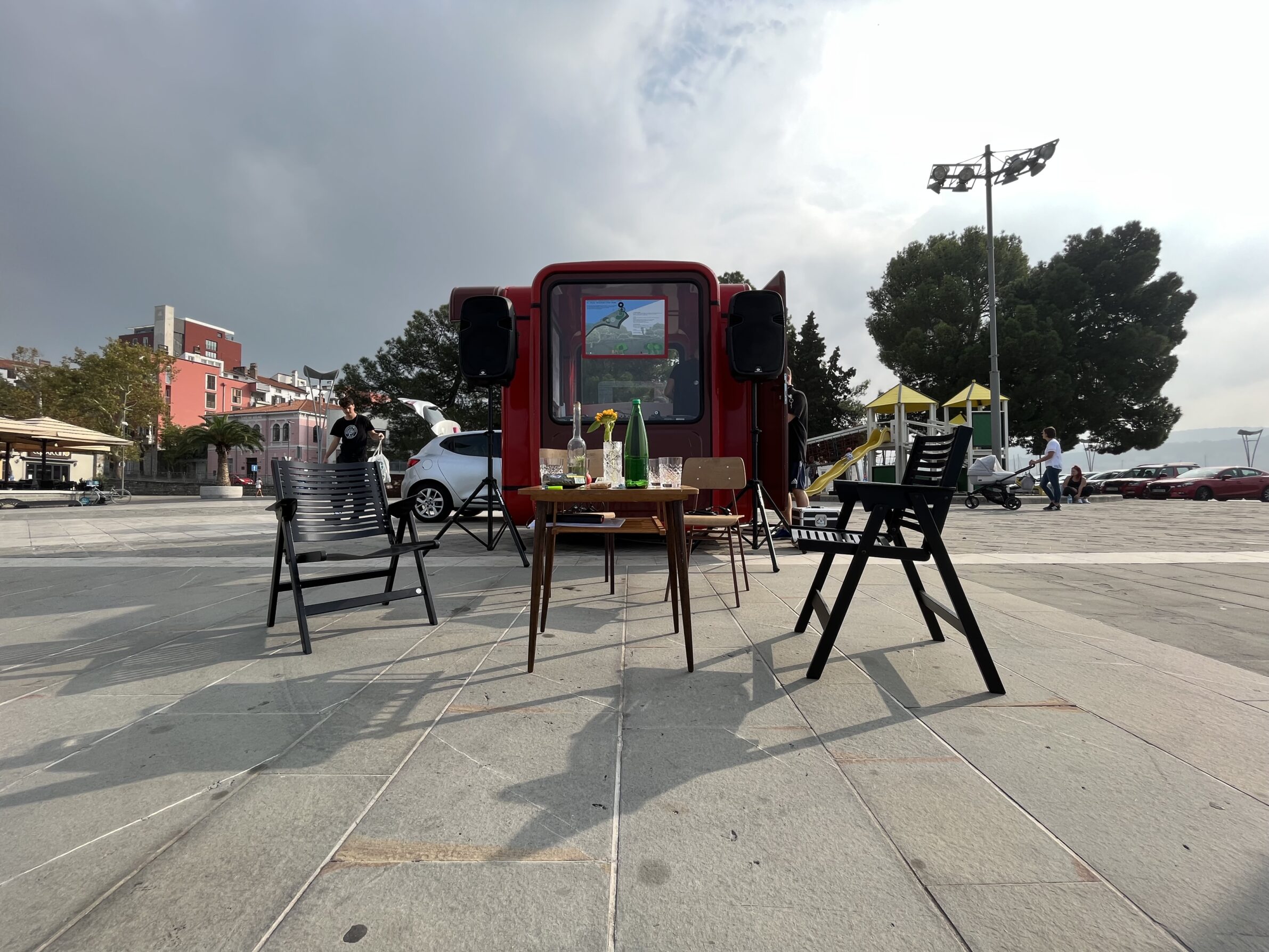
Different events at held at the K67 kiosk. Photo: © Boštjan Bugarič
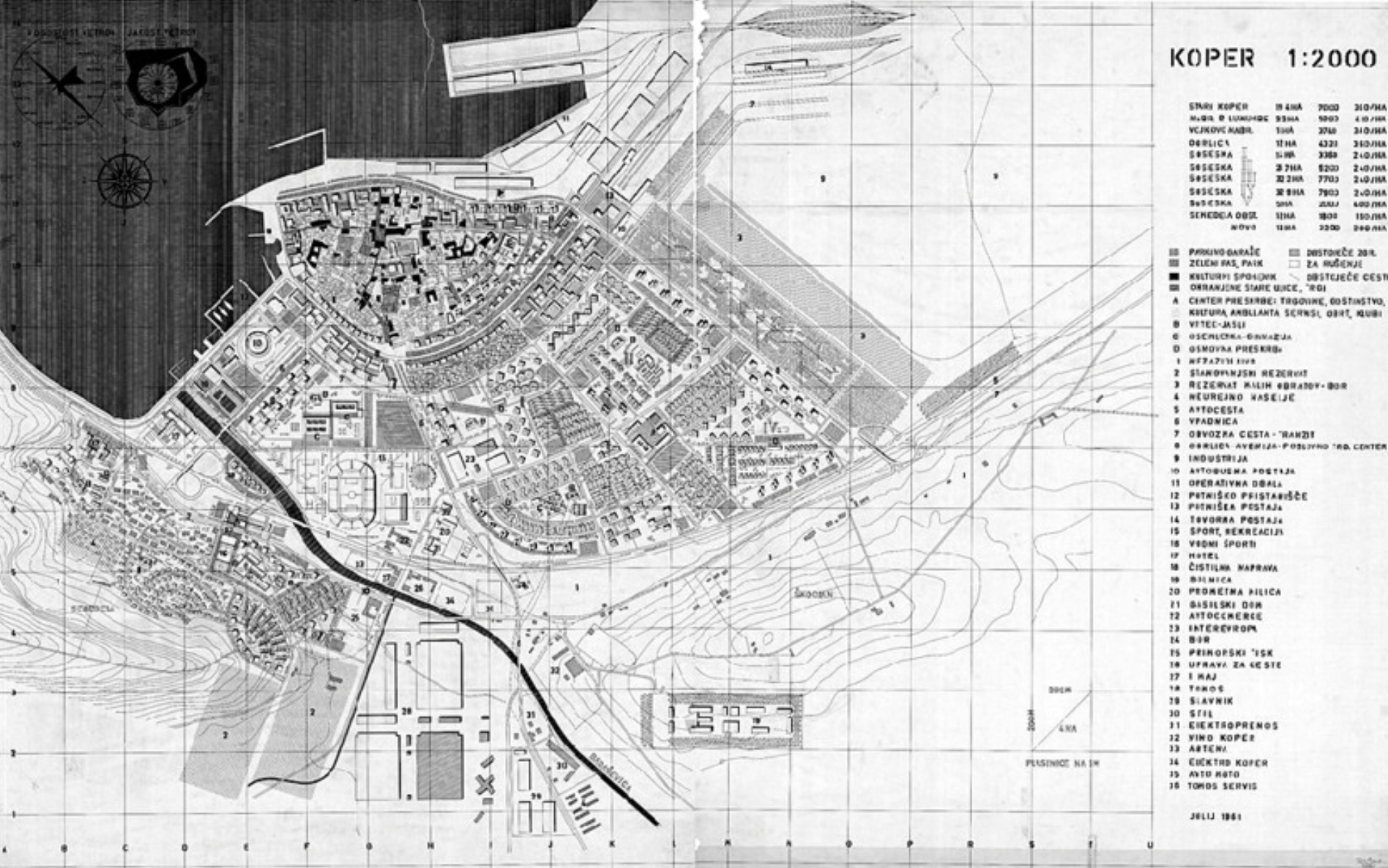
Urban plan for Koper by the architect Edo Mihevc (1961). Source: © Neža Čebron Lipovec
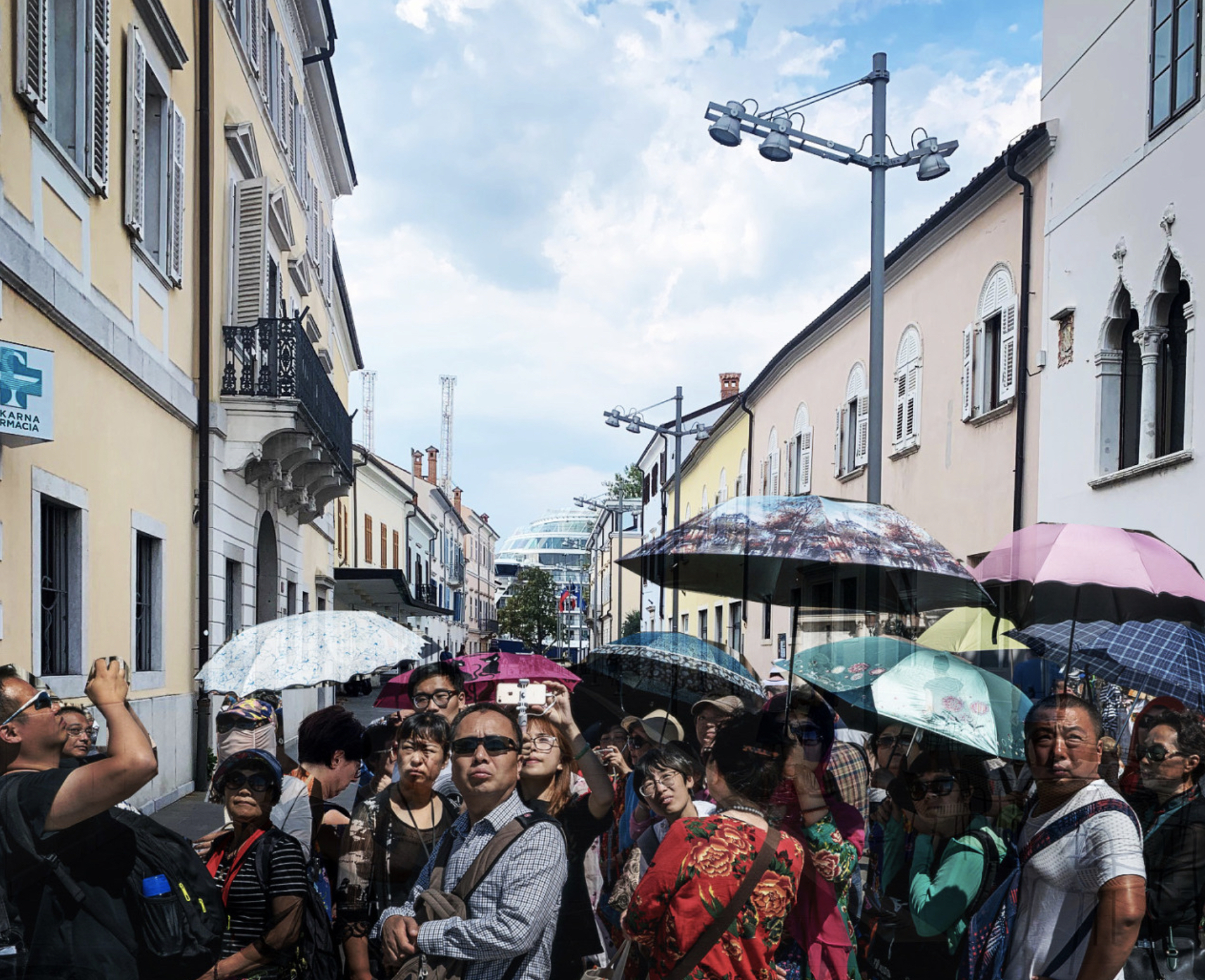
Cruise ships do not need to pay any tax in Koper, so they arrive at this port instead of Venice, where they are banned due to the pollution and disruption they cause. Photo::© Boštjan Bugarič
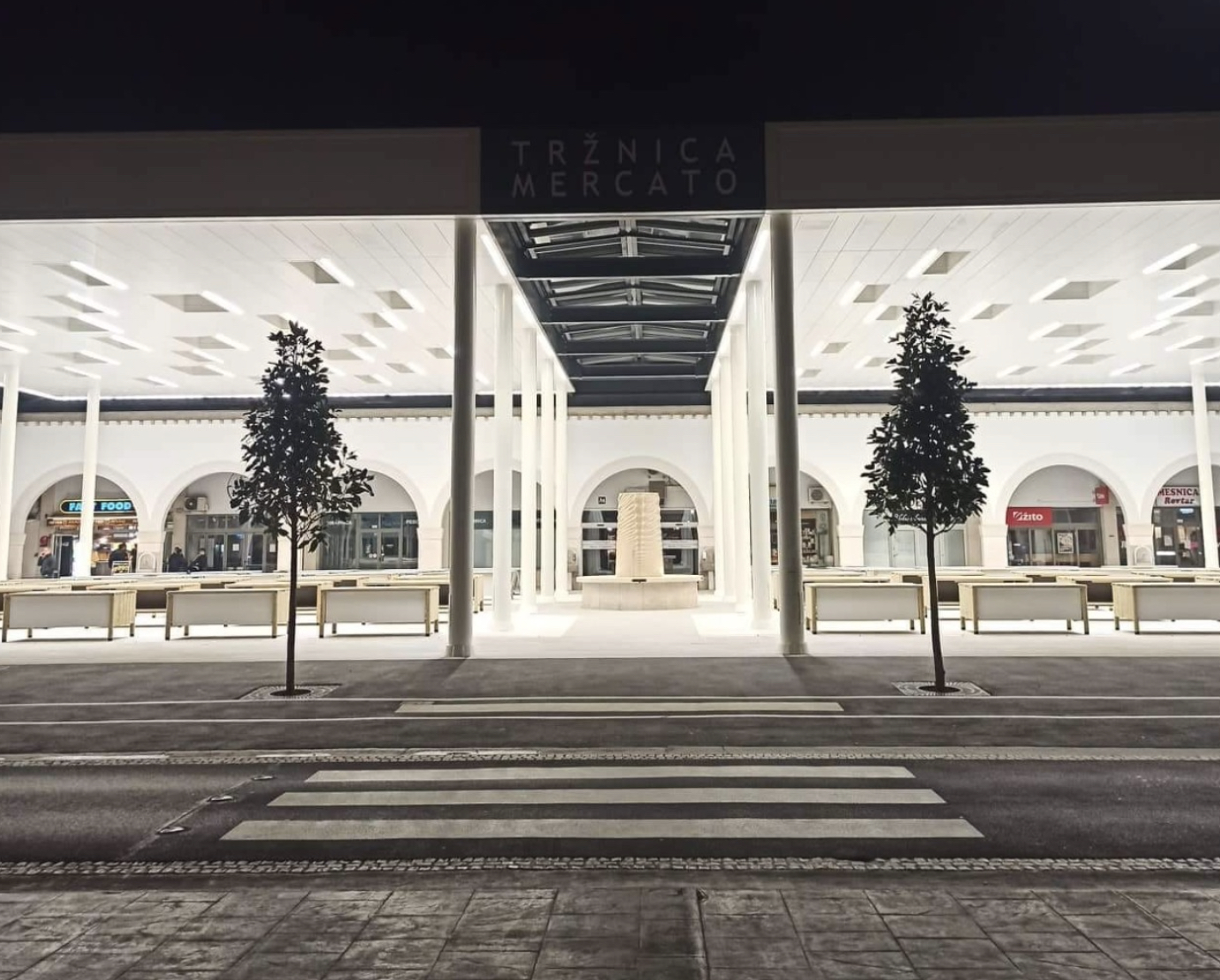
The renovation of the new roof for the city market was carried out by the municipality, but without a public competition. Photo: © Boštjan Bugarič
Text: Boštjan Bugarič
Photographers: Domen Grögl, Boštjan Bugarič, Neža Čebron Lipovec, Črt Kozlovič


